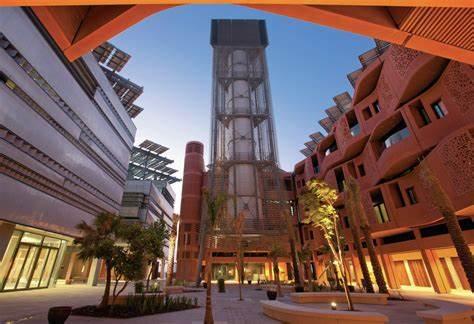Masdar City’s Net-Zero Model Sets Sustainability Benchmark, but AI Holds Key for Aging Cities, Experts Claim
A new white paper from Masdar City highlights the UAE’s leadership in net-zero urban development. Energy experts say that net-zero strategies could also be applied to most cities worldwide, even when the biggest challenge is in retrofitting old existing buildings.
Built as a purpose-driven net-zero city, Masdar eliminates the need for future retrofits by integrating energy efficiency from the start.
However, decarbonization remains a challenge for most cities worldwide, where most buildings are decades old.
Experts argue that AI-driven energy management could provide a viable solution, optimizing real-time energy use in existing infrastructure without the financial burden of deep renovations.
“Masdar City demonstrates what’s possible when sustainability is built into urban planning from the ground up,” said Donatas Karčiauskas, CEO of Exergio, a company that implements AI-based energy efficiency tools in commercial buildings. “But most of the world’s cities don’t have that luxury. The question is: how do we bring net-zero strategies to older buildings without breaking budgets? AI is the most practical answer.”
Buildings account for 40% of the EU’s final energy consumption and contribute 36% of its energy-related emissions. In Europe alone, 75% of buildings were constructed before 2000 and remain energy-inefficient, with 85-95% expected to still be in use by 2050–the net-zero deadline. This pattern is reflected globally, particularly in dense urban areas where outdated infrastructure dominates city skylines.
While Masdar’s white paper highlights the importance of renewable energy, smart grids, and green building certifications like LEED, these approaches favor new developments and regions with access to significant capital.
According to Karčiauskas, for cities with aging infrastructure, the challenge lies in improving operational efficiency rather than rebuilding from scratch.
“Certifications like LEED are useful for ensuring new buildings meet sustainability benchmarks,” he noted. “But they don’t address how older buildings actually operate. Without real-time energy monitoring, sustainability efforts remain incomplete.”
AI is set to close the efficiency gap
Traditional energy efficiency measures rely on static compliance frameworks that certify buildings at a single point in time. However, buildings are dynamic ecosystems–energy demand fluctuates throughout the day, climate conditions shift, and occupancy levels change.
AI-powered energy management systems can track, analyse, and optimize energy use in real-time, adjusting heating, cooling, and lighting based on actual demand.
“From our work at Exergio, we’ve seen firsthand how AI not only optimizes energy use but also adapts to different climates and building types,” Karčiauskas explained. “The biggest issue for many regions–whether in Europe, South Asia, or Latin America–is the lack of cost-effective, scalable solutions. AI allows cities to reduce energy waste without major renovations, making net-zero feasible for more urban areas.”
For example, different climate needs and sustainability measures are reflected in the UAE’s Net Zero by 2050 initiative and Saudi Vision 2030. Masdar City integrates solar power, passive design strategies, and advanced cooling systems to reduce energy demand by up to 40%.
However, in regions with less financial flexibility or cities facing immediate climate challenges, AI-driven efficiency tools may be a more scalable, short-term alternative to large-scale construction overhauls.
Exergio’s AI-based tools have already demonstrated measurable success. At the Ozas commercial complex in Vilnius, Lithuania, real-time monitoring and predictive analytics saved €1 million, cutting energy waste by 29%.
Similarly, in Poland, Exergio’s system reduced energy waste by 20% within nine months, saving building owners €88,000.
“The potential for AI in energy management is clear,” Karčiauskas concluded. “The challenge now is standardisation. If we align data protocols and encourage wider adoption, we can make net-zero a reality for both high-tech cities like Masdar and older urban landscapes worldwide


